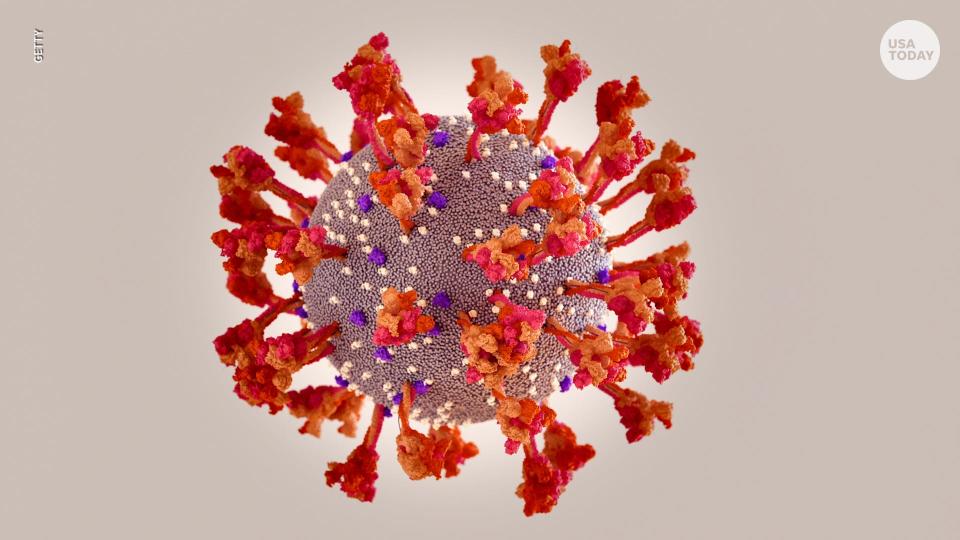Here's how the omicron variant of COVID-19 symptoms differ from the flu or a cold
Cases of the omicron variant of COVID-19 have been rising, now accounting for 73% of new infections last week, federal health officials said Monday.
Numbers from the Centers for Disease Control and Prevention have shown nearly a six-fold increase in omicron’s share of infections in only one week.
While the CDC says it's still unknown how rapidly omicron spreads as compared to the delta variant of the virus, it will likely spread more rapidly than the original strain of COVID-19.
It's possible to get the omicron variant even if you're vaccinated, but you are less likely to experience severe illness, hospitalization and death, however, breakthrough infections are still likely to occur, according to the CDC.
To help fight omicron, the CDC recommends everyone ages 5 and older be vaccinated, and everyone 18 and older to get a booster shot.
Mask wearing indoors or in areas of high community transmission are also recommended.
More: Yes, omicron has overtaken delta. No, it's not March 2020
First, how to pronounce 'omicron'
Omicron, the 15th letter of the Greek alphabet, can be pronounced in a few ways, which are both correct.
Merriam-Webster says you can either say "AH-muh-krahn" or "OH-muh-krahn."
The World Health Organization, which chose omicron as the next variant name, picked it over 13th and 14th Greek alphabet letters nu and xi, because nu sounds like "new" and xi sounds like a common surname.
Symptoms of the omicron variant of COVID-19

There's still not a lot of information on the difference between symptoms of the omicron variant and other COVID-19 variants, if there are any, but the CDC recently released a briefing with the most commonly reported symptoms.
They include:
Cough.
Fatigue.
Congestion.
Runny nose.
Kids and vaccines: Holiday school break opens a window to get kids vaccinated
Rapid tests: Biden to announce free rapid COVID-19 tests and help for overwhelmed hospitals amid omicron threat
Symptoms of delta and other COVID-19 variants
Symptoms may appear two to 14 days after exposure to the virus. Anyone can have mild to severe symptoms.
Fever or chills.
Cough.
Shortness of breath or difficulty breathing.
Fatigue.
Muscle or body aches.
Headache.
New loss of taste or smell.
Sore throat.
Congestion or runny nose.
Nausea or vomiting.
Diarrhea.
Are the symptoms between delta and previous variants any different? In short, it's not completely clear.
COVID-19: The omicron variant is in the Cincinnati region. Now what?
What are the symptoms for a cold?
Like COVID-19, the symptoms are often:
Coughing.
Sneezing.
Runny or stuffy nose.
Sore throat.
Tiredness.
Sometimes a fever.
Symptoms usually appear one to three days after exposure to a cold-causing virus.
Unlike COVID-19, a cold is usually harmless and cold-sufferers generally recover in three to 10 days.
Is it the flu?
The flu is different from a cold, and it can often come on suddenly, according to the CDC. Symptoms can include:
Fever, or feeling feverish and chills. It is important to not that not everyone with the flu will have a fever.
Cough.
Sore throat.
Runny or stuffy nose.
Muscle or body aches.
Headaches.
Fatigue.
Some people may have vomiting and diarrhea, although its more common in children than adults.
Is it allergies?
There are some key differences in symptoms. Currently, The Weather Channel's allergy tracker for Cincinnati is listed as "none," with no grass, tree and ragweed pollen counts.
Common allergy symptoms include:
Runny nose.
Sneezing.
Red, swollen eyes.
Itchy eyes.
Itchy nose.
Tickle in the throat.
Rarely a fever.
This article originally appeared on Cincinnati Enquirer: Omicron symptoms: How COVID-19 variant compares to flu or cold

